Since the wine war is getting tougher, the producers are suiting up
As we said in our last article on the war against wine counterfeiting, the fight is getting hard and many wineries are having hard times trying to catch up with the criminals and with the technology to defeat them.
But some of them found out some smart way to fight counterfeiting.
Château Angelus 2012, Saint-Émilion Grand Cru
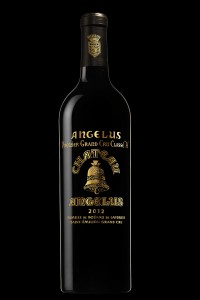 The new black bottle for the 2012 Angelus is embossed with 22-carat gold words and the Saint-Émilion château’s iconic bell symbol. Fusing the gold onto the glass required two firings at 600°C and 500°C, making it hard to replicate it.
The new black bottle for the 2012 Angelus is embossed with 22-carat gold words and the Saint-Émilion château’s iconic bell symbol. Fusing the gold onto the glass required two firings at 600°C and 500°C, making it hard to replicate it.
Most of the wineries use less-impressive but still effective techniques to assure the wine geeks they’re getting what they paid for.
Several security companies who worked to defend pharmaceuticals and fashion brands are poking the wine industry with tons of high-tech solutions against counterfeiting. Back in 1984, for example, Château d’Yquem started incorporating a special watermark its label and, in the 1990s, Penfolds moved to the next level, adding a laser-etched identification on its bottles of Grange.
Here there are some anti-fraud tools.
Tagged inks
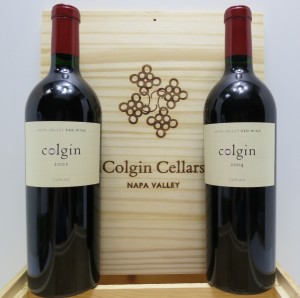 In 2007, Colgin Cellars used for the first time the Kodak’s Traceless System, an invisible marker added to the printing ink, detectable only by a handheld Kodak scanner. Colgin’s labels incorporate subtle color-shifting tags, too, just to make it harder. Looking closely at the color inside the “o” in “Colgin” you’ll notice that the hue is different, depending on the wine. For example, the IX Estate Vineyard it’s purple.
In 2007, Colgin Cellars used for the first time the Kodak’s Traceless System, an invisible marker added to the printing ink, detectable only by a handheld Kodak scanner. Colgin’s labels incorporate subtle color-shifting tags, too, just to make it harder. Looking closely at the color inside the “o” in “Colgin” you’ll notice that the hue is different, depending on the wine. For example, the IX Estate Vineyard it’s purple.
Colgin’s gold and red capsule has a notch that matches one in the ring of glass at the top of the bottle, to make it hard to replace after the bottle has been opened.
Proprietary Paper
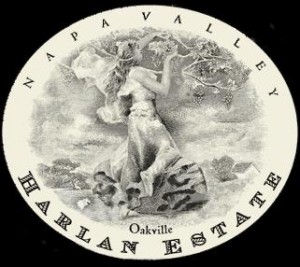 Since printing has become so easy, Harlan Estate decided to include some complex anti-fraud elements in its label from 1990.
Since printing has become so easy, Harlan Estate decided to include some complex anti-fraud elements in its label from 1990.
The label is printed using an intaglio technique on proprietary paper with a special ultraviolet ‘signature. The printing is done by a security printing firm and make it almost impossible to reproduce the label.
Not satisfied, in 2004, Harlan added a sequential serial number and a randomly generated number tied together with a Radio frequency identification chip so the bottle can be authenticated on the Harlan website.
Tamperproof capsule seals
 The simplest way to counterfeit a wine is filling an empty bottle of an expensive wine with a cheap one, re-corking it, and selling it for the price of the expensive one.
The simplest way to counterfeit a wine is filling an empty bottle of an expensive wine with a cheap one, re-corking it, and selling it for the price of the expensive one.
Prooftag’s BubbleTag capsule seal aims to prevent this kind of counterfeiting. Each strip features a square of translucent polymer containing tiny bubbles generated in a unique random pattern and a linking 13-character alphanumeric identification code and a QR or a 2G code.
The strip is partially applied on the glass and partially on the capsule during the production process. It’s damaged when you try to remove it or open the bottle.
The Bordeaux’s Château Palmer has used the BubbleTag on its bottles since the 2009 vintage as well as on all older vintages 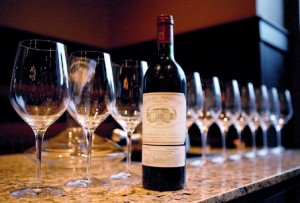 released from the château.
released from the château.
This technology is widely used. Margaux, Lafite-Rothschild, Latour, Smith-Haut-Lafitte and all the properties owned by Count Stephan von Neipperg in Bordeaux and Domaine des Comtes Lafon and Domaine Ponsot in Burgundy are among its users.
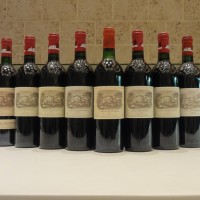 A similar sticker is provided by Advanced Track and it’s used on officially ranked Crus Bourgeois du Médoc wines since the 2010 vintage.
A similar sticker is provided by Advanced Track and it’s used on officially ranked Crus Bourgeois du Médoc wines since the 2010 vintage.
Holograms and encrypted microtext
Many wineries are now adding to their labels the same unique holograms with several levels of security featured in credit cards.
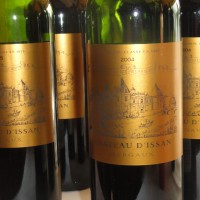 The UK-based company De La Rue Holographics designed one for the ONDOV, a government trade association created to authenticate Romanian wines and protect them against poor quality counterfeit imports.
The UK-based company De La Rue Holographics designed one for the ONDOV, a government trade association created to authenticate Romanian wines and protect them against poor quality counterfeit imports.
For example, the Château d’Issan’s labels include both a hologram and a microtext code hidden in the label design and visible only under magnification, which allows the wine to be traced to the seller who purchased it for re-sale.
NFC Chips
The NFC security tag, developed by Belgian company Selinko, is behind the label and contains a tamperproof, encrypted digital certificate with unique information about the bottle. Buyers can check the authenticity of the wine by scanning with an NFC-enabled smartphone.
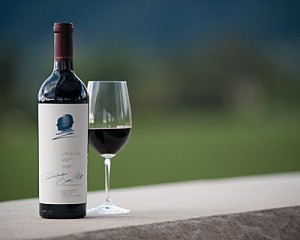 NFC chips are the next step in RFID chip evolution.
NFC chips are the next step in RFID chip evolution.
Opus One has inserted an NFC chip manufactured by Florida-based iProof company since 2008 and they also use a special security ink placed on the capsule.
The NFC technology is applied to capsule seals, but at the VinExpo in Hong Kong this May – stay tuned for our report! -, The Belgian company Selinko and Inside Secure unveiled their CapSeal. The NFC chip is connected to an small antenna inside the neck of the bottle that is deactivated when removing the capsule. Scanning with a mobile app tells you whether that’s happened.
If these James Bond’s style methods will stop the criminal for good it’s hard to say. Fraudists will adapt as they always do and one big challenge for wineries will be keeping up with the latest technology. For sure giving up will not be the solution!



 0
0